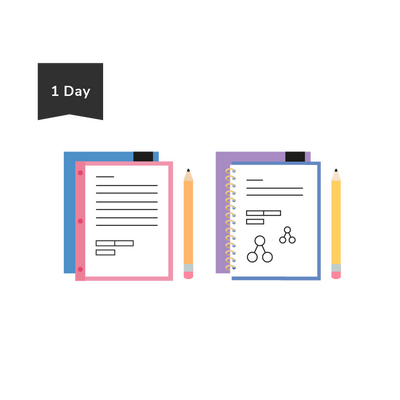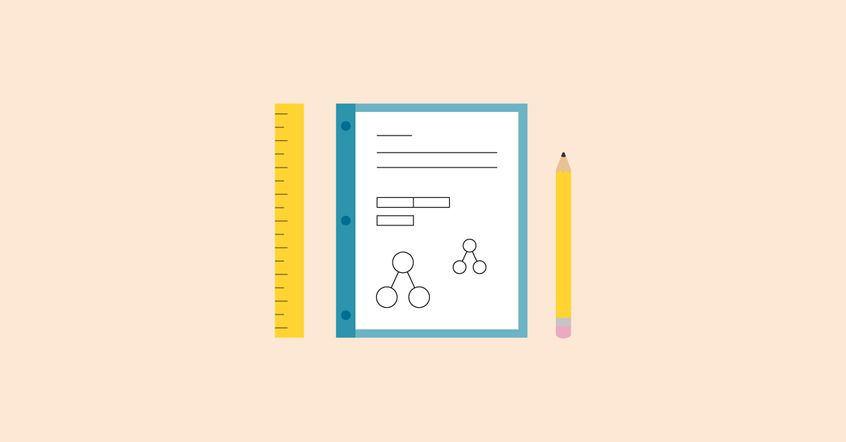5 types of maths journals and how to use them
Editor’s Note:
This is an updated version of a blog post published on October 30, 2019.
Think of journalling as the icing on the maths mastery cake. Here are the five different types of journals and how you can add them to your practice.
To some, journalling is a tool that allows you to assess understanding after you have taught a concept. But it’s far more than a simple reflection at the end of a lesson.
How you use maths journals in your classroom will depend on the needs of your learners. You can use them daily during lessons, ask learners to write entries at the end of the lesson, or use them for particular lessons. There is no ‘right’ way to use journalling in your class; you will find what suits you.
Before you decide when to use journalling, or what journal to use, here are a few tips to help make them more effective:
- Plan them into your lesson
- Leave adequate time
- Regularly use the different types of journalling tasks
- Check them around once a week
- There’s no need for formal marking
- Remember, they should not be perfect
- You’re not aiming to find the ‘right’ answer
In journals, children can record their responses in different ways. They can use pictures, diagrams, and writing. Expressing themselves like this develops their mathematical language and helps them verbalise their thinking. They can start to make deep connections between areas of learning.
What are the different types of journals?
Journal entries follow a simple format. The date and title are at the top of the page, followed by a problem to solve, and space for your learner to respond underneath.
There are five different types of journal entries:
1. Descriptive
2. Evaluative
3. Creative
4. Investigative
5. Formative
1. Descriptive journalling
Descriptive questions ask children to describe the methods they have used or explain a concept. For example, ‘How do you multiply a two-digit number by another two-digit number?’ or ‘Describe a square.’ Descriptive journalling lets you see if learners have misconceptions or gaps in their understanding.
To get your learners started, ask them to:
- Write a set of instructions
- Take photos of concrete manipulatives and explain how they used them
- Write a letter to another child
- Create a poster to explain a concept
- Write a reflection of the lesson
- Annotate their drawings and diagrams
It’s important to emphasise the mathematical language that you want your class to include. Displaying vocabulary, using prompt sheets, and modelling will help them with correct terminology.
2. Evaluative journalling
Evaluative tasks ask children why they chose a method and how helpful it was to solve the problem. Children must justify the choices that they’ve made.
Questioning can help children to verbalise their thinking. Ask your learners:
- Which method was best for solving this problem?
- Why did you choose this way?
- How can you show me that this method is most efficient?
- Why don’t you recommend this strategy?
- How do you know I am wrong?
3. Creative journalling
Creative journalling lets children develop models and stories to show their understanding. For example, ‘The answer is 25. What could the question be?’ Creative journalling lets you challenge all learners by providing low threshold–high ceiling problems.
To get your learners started, ask them to:
- Create their own number puzzle
- Write a new word problem for a friend to solve
- Give them an answer and ask them what the question might be
- Write a story to go with a calculation
Some children will find it hard to know where to start. Providing word banks, templates, and modelled examples can be very useful for them.
4. Investigative journalling
Children can explore a problem and record their findings, such as, ‘I buy a toy in a shop. I get 20p change. What coins did I get?’ This helps them to make connections to previous learning and verbalise their ideas.
Scaffolded support can help children who might struggle to know where to begin. This could include:
- Providing examples of different methods
- Photos and diagrams of modelled examples
- Group or paired journalling
- Sentence starters
- Speech bubbles for children to write sentences in
- Using concrete manipulatives and taking photos of the process
5. Formative journalling
Children show you what they have learned and understood in formative journal entries. This is an opportunity for them to reflect on what they found challenging and why. Formative journals are a great way to assess and record progress.
You might ask your class:
- What mistakes did you make? How did you learn from them?
- What did you notice?
- What did you know before and what do you know now?
- Does this remind you of any other work you’ve done?
- What does this tell you?
Practice, practice, practice
When you read journal entries, use it as a chance to learn more about the child. Did they understand the method? What would you still like to know about their understanding? If you do give feedback on journal entries, give responses that relate to what the child has written rather than generic comments.
Journalling takes time to develop. It relies on you practicing with your class to build their confidence and understanding of your expectations. Initially, expect your children to take a long time to create their journal entries. They will be more efficient as they become familiar with them.
We often say that you have only learned something if you can teach it to someone else. Journalling allows children to do just that by explaining, convincing, and justifying their responses.
Journalling for Mastery CPD
Would you like to use maths journalling to advance your pupils? This one-day, expert-level course will show you how. Learn from one of our friendly experts in a relaxed, face-to-face setting. 14 June in London or 28 June in Manchester.

